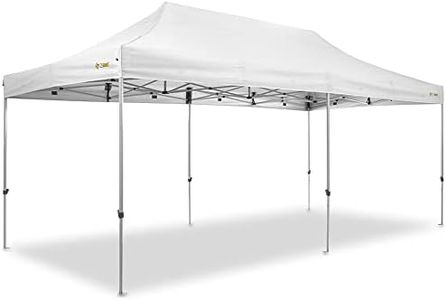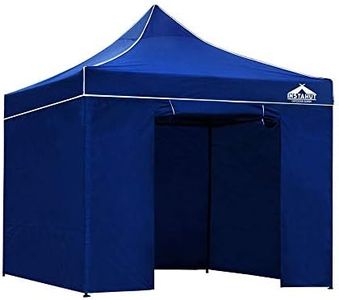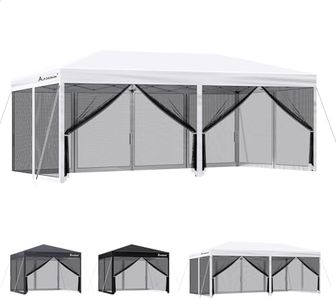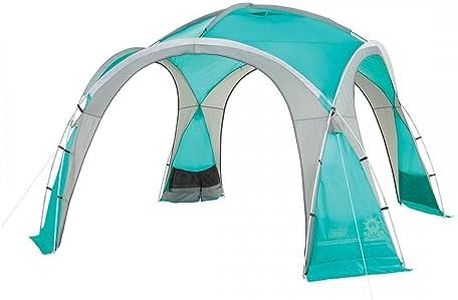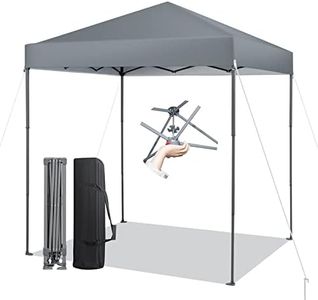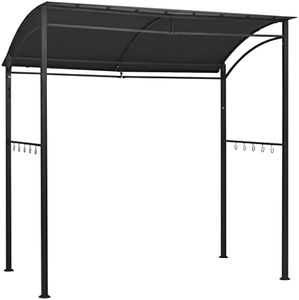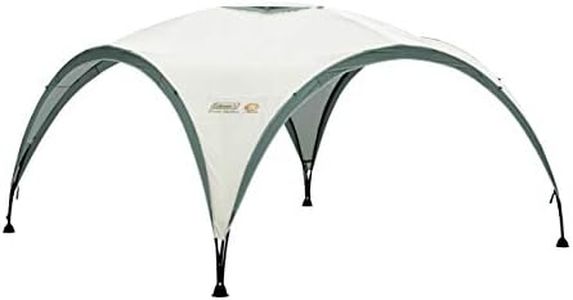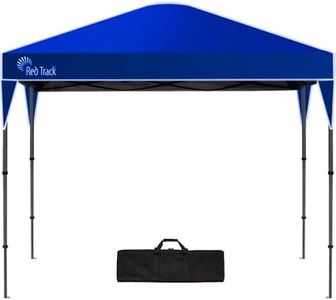We Use CookiesWe use cookies to enhance the security, performance,
functionality and for analytical and promotional activities. By continuing to browse this site you
are agreeing to our privacy policy
10 Best Gazebos
From leading brands and best sellers available on the web.Buying Guide for the Best Gazebos
Choosing the right gazebo means finding a balance between size, material, stability, and your intended use. Before you dive in, think about where you want to place the gazebo, how often you'll use it, whether it's for gatherings, shade, or as a permanent outdoor structure, and how much maintenance you're comfortable with. Each gazebo will offer a different mix of durability, convenience, looks, and protection from the elements—understanding these differences will help you select the best match for your outdoor space.Size and DimensionsThe size and dimensions of a gazebo determine how much space it will take up in your yard and how many people can comfortably fit underneath. Common sizes can range from small (around 6x6 feet) to large (12x12 feet or more). A small gazebo is ideal for intimate seating or a couple of lounge chairs, while larger options work well for bigger groups or outdoor dining sets. To decide on the right size, measure your outdoor space and consider the typical number of people you plan to host or the activities (like dining or relaxation) you want to accommodate.
Frame MaterialThe frame is the skeleton of your gazebo and is often made from either metal (like steel or aluminum) or wood. Metal frames are usually more weather-resistant and may require less maintenance, but can get hot in the sun and may not have the same classic look as wood. Wood offers a traditional, natural appearance and is sturdy but may require periodic sealing or painting to prevent damage from weather. Pick a frame material based on how much maintenance you’re willing to do and what style fits your outdoor space best.
Roof Type and MaterialThe roof of a gazebo can be made from different materials such as fabric, metal, or polycarbonate panels. Fabric roofs are lightweight and easy to swap out but may not last as long or protect as well from rain and sun. Metal and polycarbonate roofs provide better durability and weather protection but can increase the weight and permanence of the gazebo. When choosing, consider how much shelter you need—fabric is better for temporary shade, while solid materials are best for all-weather use or permanent installation.
Portability vs. PermanenceSome gazebos are designed to be portable, with lightweight materials and easy assembly for events or seasonal use, while others are made as permanent fixtures that stay up all year. Portable gazebos are great if you want flexibility or need to move the structure around, but they’re usually less sturdy during storms. A permanent gazebo is more stable and weather-resistant but requires more work to install and should be placed in a spot you’ll want it for a long time. Think about whether you want something you can put up and take down, or a gazebo that’s always ready to use.
Ease of AssemblyGazebos vary widely in how difficult they are to assemble. Some can be snapped together by two people in just an hour or two, while others may need several people, tools, and a whole day or more to build. Simpler, lighter designs tend to be easier for beginners, while more complex or heavy-duty gazebos may require extra help or professional installation. Consider how comfortable you are with assembling furniture and how quickly you want your outdoor retreat ready.
Weather ResistanceWeather resistance refers to how well the gazebo stands up to rain, wind, sun, and possibly snow. Features such as UV-resistant fabrics, rust-resistant metals, and water-repellent coatings indicate better protection. If you live in an area with strong sun or frequent storms, look for a gazebo with features that are specifically meant for harsh weather. If your area is mild and you only plan occasional use, basic water and sun resistance may be enough.
Ventilation and Mosquito ProtectionSome gazebos come with mesh sides, removable curtains, or vented roofs. Mesh sides help keep bugs out during summer evenings, while vented roofs allow hot air to escape for a cooler space inside. If you’re in a buggy area or plan to use your gazebo for meals, features like netting or airflow can make a big difference in comfort.
